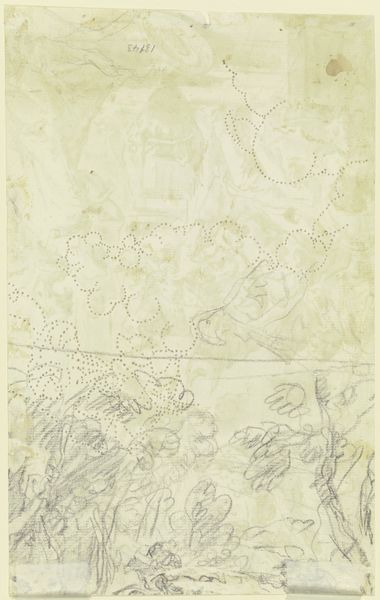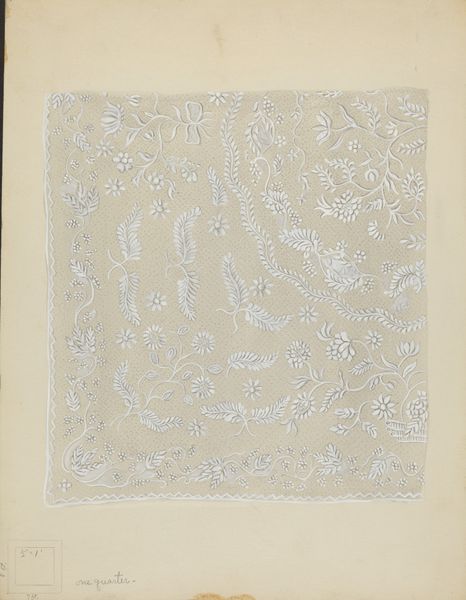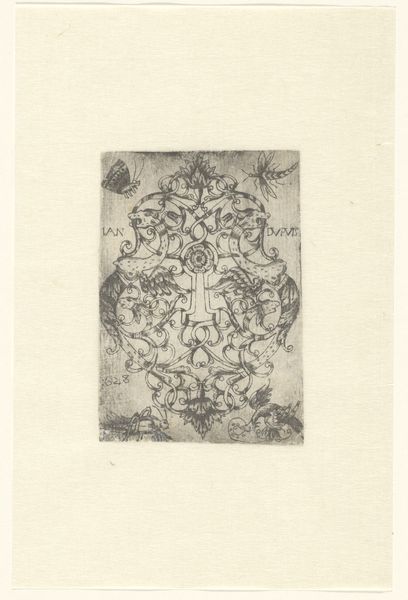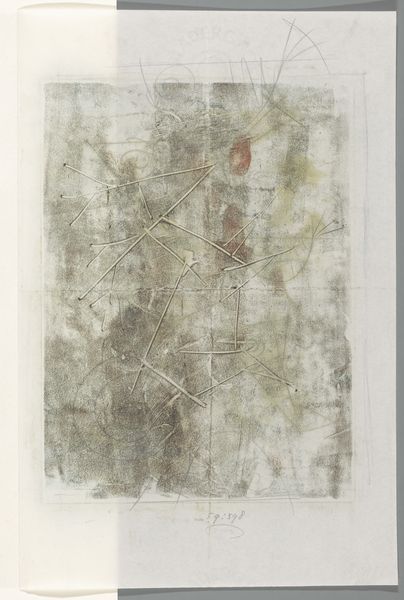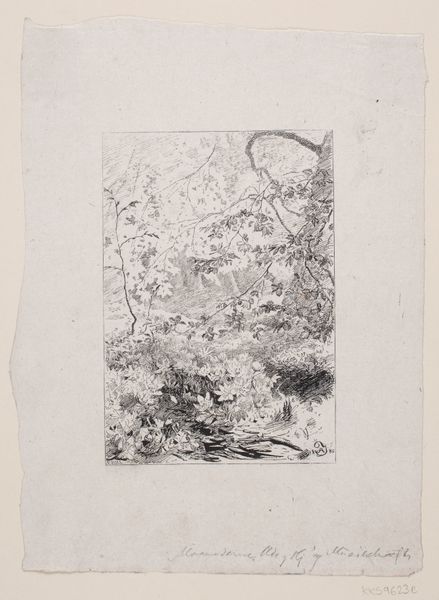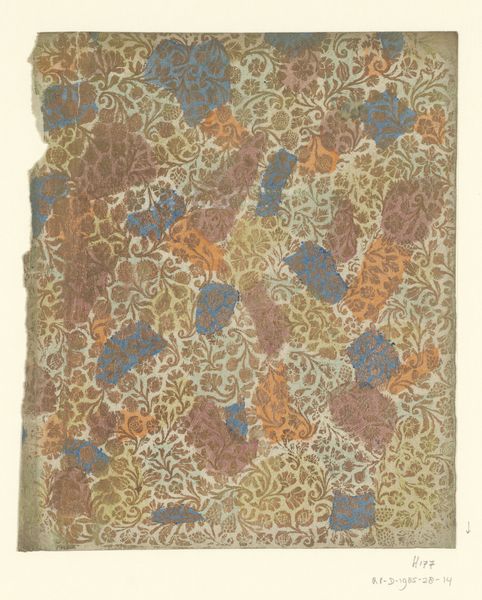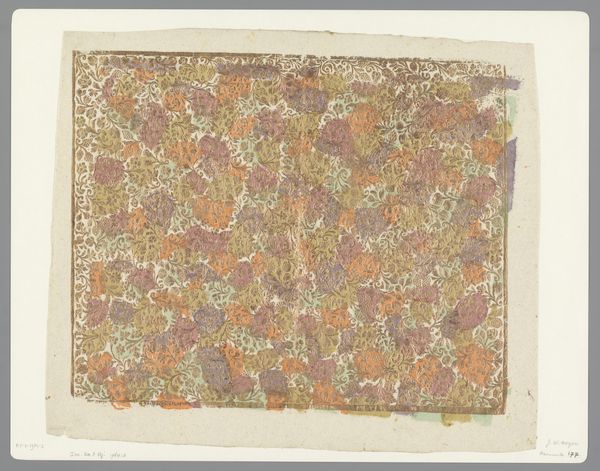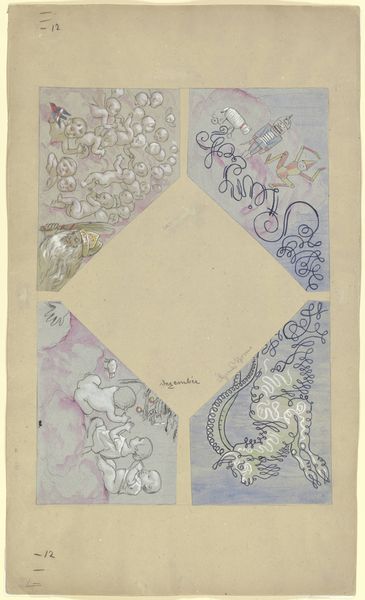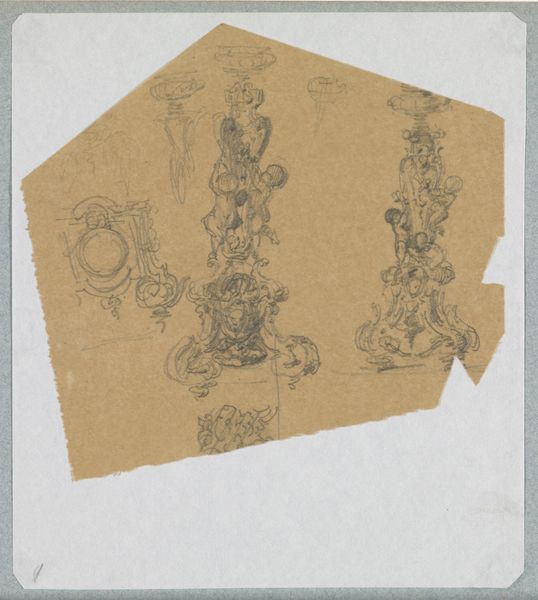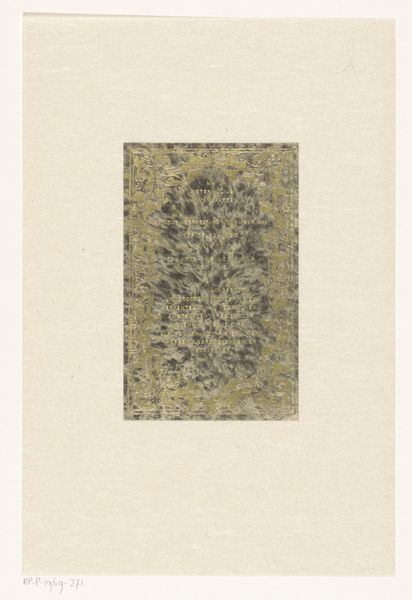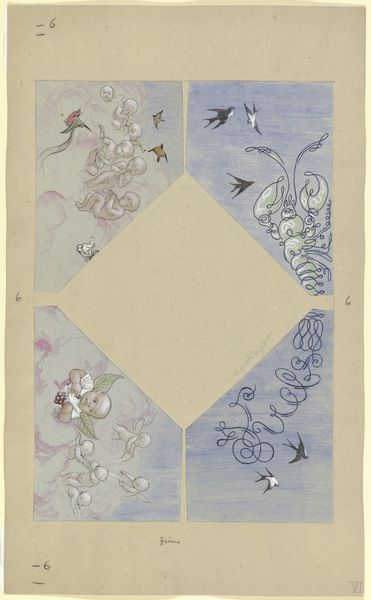
Ontwerptekening op calqueerpapier voor een kleed van kloskant met goudenregentakken en -bloemen c. 1912
0:00
0:00
#
toned paper
#
light pencil work
#
water colours
#
personal sketchbook
#
sketchbook drawing
#
watercolour bleed
#
watercolour illustration
#
mixed medium
#
sketchbook art
#
watercolor
Dimensions: length 55 cm, width 46 cm
Copyright: Rijks Museum: Open Domain
Curator: This is a design drawing on tracing paper for lace, dating to around 1912, by Louise Wilhelmina van der Meulen-Nulle. It’s beautiful in its delicate detail, with golden rain tree branches and flowers meticulously drawn in watercolor. Editor: It's amazing how precise and intentional each line is. How would you approach interpreting something like this from a materialist perspective? Curator: We need to consider this drawing not just as a representation of beauty, but as a step in a chain of production. Think about the labor involved: first the drawing, then the intricate process of making lace. Editor: So you're saying the finished textile product—the lace itself—is paramount in considering how to discuss this piece? Curator: Precisely! The lace, a crafted textile object, existed within a network of social relations. Consider the means of production: who made the lace? What were their working conditions? Was it a product destined for elite consumption? Editor: Interesting. So the design connects to broader societal structures and how goods are manufactured and distributed. Curator: Absolutely! The tracing paper itself is a telling detail. It speaks to replication, industrialization and, possibly, a shift in perceptions of value from the handmade unique item to the mass-produced. It challenges the idea of ‘high art’. Editor: So by looking at the materials and process, we see a narrative about labor and consumption that transcends just the aesthetic value. Curator: Exactly. This seemingly simple design is really a window into a complex web of production, social class, and evolving ideas about craft. What did you get out of this experience? Editor: It has widened my perspective and it definitely moves away from just the final image, or the design's function in this case. Curator: For me, too. It serves as a stark reminder that these supposedly discrete art objects are embedded within specific processes, relationships, and realities.
Comments
No comments
Be the first to comment and join the conversation on the ultimate creative platform.

